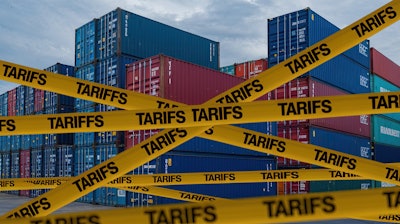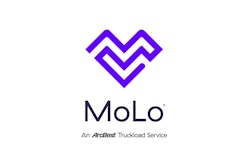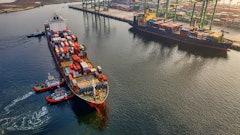
The tremors of tariffs set off by the Trump administration have disrupted businesses both nationally and internationally, as senior leaders scramble to find ways to mitigate the financial repercussions. The quickly evolving trade climate has also brought trade compliance to the limelight, with trade compliance now having a say at the table in company boardrooms.
The reasoning is — there’s a real need to collaborate with trade compliance on sourcing decisions, as added tariffs can quickly change the viability of sourcing from vendors in an impacted market. Understanding regulatory changes and ensuring supplier-level compliance is crucial to staying afloat during such volatile times.
The real question companies have today is: How do tariffs impact my business, and how do I plan around them?
Today, forecasting is a moving target. While tariffs are painful, they aim to push companies to invest in manufacturing and sourcing within the United States. That said, the frequent policy oscillations, as with the case of imports from Mexico and Canada — two of America’s largest trade partners — can leave businesses confused and uncertain about expansion plans.
Fundamentally, companies base their manufacturing in markets with higher incentives to maximize profits, considering that all other metrics remain roughly equal.
Take, for instance, a retailer that consolidates warehousing and distribution in Canada to fulfill orders across North America.
In this scenario, the company benefits from manufacturing in China due to lower labor costs while consolidating its inventory in Canada to optimize tax savings. Additionally, they avoid the Section 301 duties imposed on commercial-level inventory replenishment from China into the United States. By leveraging the de minimis exception, they also avoid U.S. import duties by shipping individual retail orders from Canada to U.S. customers, making their supply chain more cost-efficient. Accounting for all this, the retailers maximize their profits thanks to the supply chain and regulatory incentives that were previously offered.
In this new era of tariffs, the company’s business model could be on the brink. The tariffs implemented by President Trump earlier this year using the International Emergency Economic Powers Act (IEEPA) opened the door for the elimination of de minimis privileges on China origin imports from May 2. Without de minimis, these same retail imports currently duty free will face a minimum 145% punitive tariffs on China origin in addition to the standard most favored nation (MFN) duties that can range from FREE - 67.5% for commodities like footwear depending on the harmonized tariff code. While a last-minute delay delayed de minimis expiration, the Trump administration announced on April 2 that they now had the processes in place to proceed 30 days later.
This gives the example company three options — raise prices from what customers pay today, exit the U.S. market entirely, or in some cases, declare bankruptcy to deconsolidate from Canada and set up a new entity in the United States that serves the local market.
Beyond the commentary on the impact tariffs could have on businesses, it is vital to understand how to plan around them. While methods to manage such situations can vary, the common denominator here is ensuring your trade data is accurate, organized and available.
Having granular insights into both transaction and transportation level data allows leaders to run multidimensional what-if scenarios as new tariffs are announced and shipments are already loaded en route to the United States, enabling them to react effectively to changes. While trade has always flourished in times of lowest external disruption, the future frontrunners in the market will be those who can quickly adapt to changes and make data-driven decisions at speed and scale.
Visibility into trade data allows companies to make derivative calculations, with the potential to materially influence the customs duties they pay. Consider an automotive OEM in the United States affected by the Section 232 tariffs first levied on steel and aluminum components that were not melted and poured or smelt and cast in the United States and recently expanded to include finished passenger vehicles and specific auto parts. To understand the source and value of these imported components, the OEM will need to have visibility into the cost bills of material for each component, all the way upstream in the supply chain to the producer of the raw metal. If the metal value and country of melt and pour/smelt and cast cannot be sufficiently defended under audit, and/or U.S. origin content defensible to reduce tariff exposure, the manufacturer could be subject to a rate advance on duties long after the import was processed.
While President Trump’s tariffs can be unpredictable, it behooves savvy importers to monitor trade impact via a comprehensive dashboard that displays impacted shipments and their harmonized tariff codes, duty amounts, and the tariff regimes and/or tariff exceptions applied. Besides helping trade compliance gauge the situation, such a solution can help them report tariff consequences to leadership, allowing a seamless transfer of information across the organization.
Overnight trade policy changes can be an existential threat, but only if an organization is unable to be nimble with their planning.
This is not limited to the impact of U.S. import tariffs, either. Reciprocal tariffs levied against trading partners add another layer of complexity when U.S. exporters ship to countries subject to retaliatory tariffs. This makes effective tariff scenario planning even more complex.
Thriving in a volatile market is more than having a lot of resources at your disposal — it's about having a clear line-of-sight and a fast response time. With the right tools and data, businesses can stop reacting to disruption and start planning through it. When uncertainty becomes the norm, resilience becomes the strategy.




















